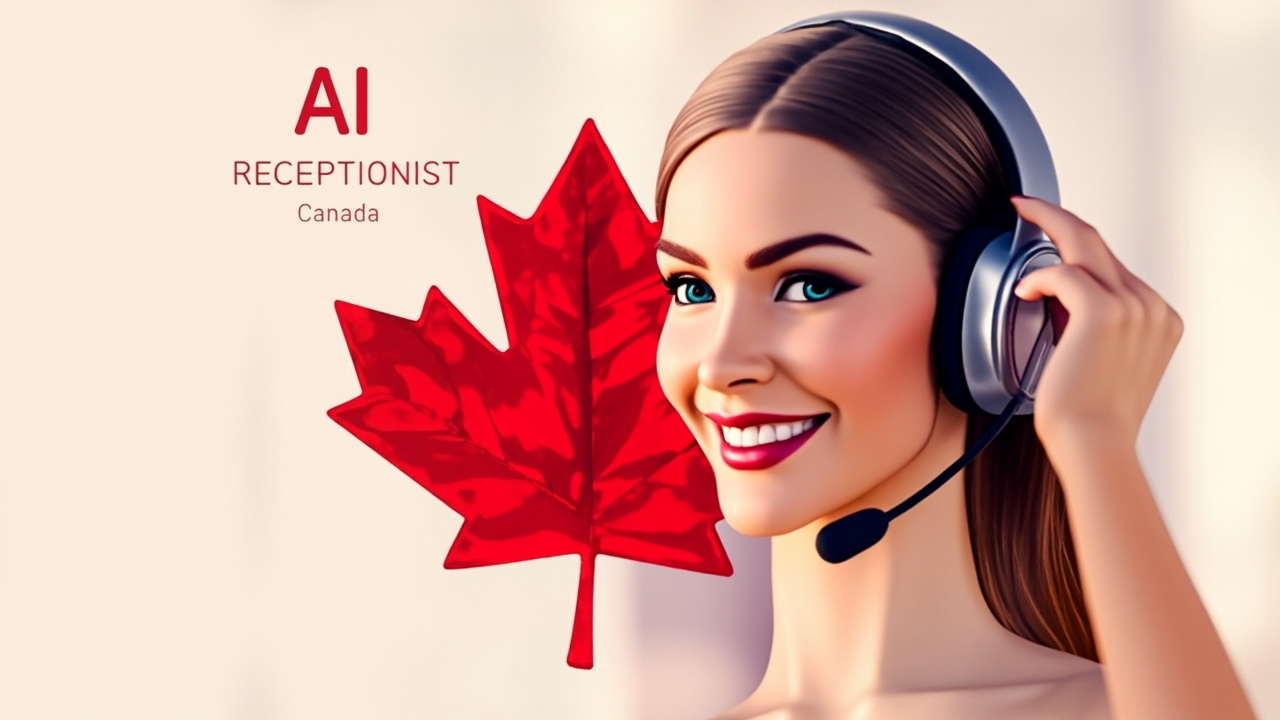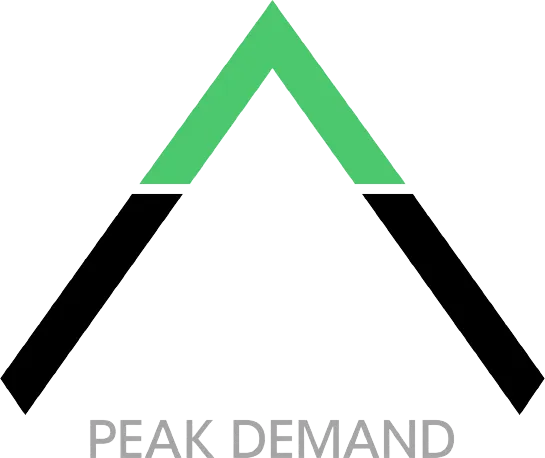Peak Demand Blog

AI Receptionist for Medical Office in Canada: Setup & Guide
AI Receptionist for Medical Office: Why Your Practice Needs One

An AI receptionist for medical office answers every call—day or night—so you never miss a lead. It’s like having a 24/7 team member who never sleeps.
Key benefits include:
Automated Patient Intake Form: Voice-driven data capture replaces clunky PDFs and web forms.
After-Hours Answering Service for Healthcare: Capture urgent patient questions and appointment requests overnight.
Cost Savings: Slash front-desk labor costs with a predictable subscription model.
Improved Accuracy: Real-time validation and error correction reduce intake mistakes.
Seamless Integration: New patient details sync automatically with your EHR or practice management system.
By deploying an AI receptionist, your clinic boosts efficiency, accuracy, and patient satisfaction—while keeping your team focused on care, not call handling.
How to Build an AI Receptionist for Medical Office

Creating an AI receptionist for medical office involves assembling several key components and following a structured rollout plan:
Select Your Voice‐Agent Engine
Choose a platform with healthcare‐grade speech recognition and HIPAA/PIPEDA compliance.
Ensure support for multilingual prompts if you serve diverse communities.
Design Conversational Scripts
Map out all patient touchpoints: appointment requests, insurance inquiries, and basic triage.
Include fallback responses (“Let me connect you with our staff”) and consent prompts.
Integrate with Practice Systems
Connect via secure APIs to your EHR or practice management software.
Set up webhooks for real‐time data sync: new patient records, appointment updates, and follow‐up reminders.
Implement Automated Patient Intake Form Flows
Define each form field as a voice prompt (e.g., “Please state your date of birth”).
Enable on‐the‐fly validation to catch typos and missing answers.
Configure After‐Hours Answering Service
Route off‐hour calls to the AI receptionist with full intake capabilities.
Program handoffs so daytime staff receive a complete call log when they return.
Test in a Sandbox Environment
Run simulated calls covering routine and edge‐case scenarios—insurance bans, unclear speech, and holiday closures.
Adjust scripts and confidence thresholds based on failure points.
Train & Launch
Conduct staff training sessions to review AI logs and learn escalation protocols.
Go live in phases—start with after‐hours only, then expand to full coverage once confidence is high.
By following these steps, you’ll build a robust, compliant AI receptionist for medical office that streamlines intake, captures leads round‐the‐clock, and integrates seamlessly with your clinic’s workflows.
Automated Patient Intake Form with Your AI Receptionist
An automated patient intake form powered by your AI receptionist transforms how clinics collect new‐patient data:
Voice‐First Data Capture:
Callers respond naturally to prompts like “Please state your full name,” “What’s your date of birth?” and “List any allergies.” No printing, typing, or emailing required.Real‐Time Validation & Correction:
The AI flags invalid entries—wrong phone formats or missing fields—and asks follow‐up questions (“I didn’t catch your insurance provider. Can you repeat that?”), ensuring complete, accurate records.Seamless EHR Integration:
Once captured, intake details flow directly into your EHR via secure APIs. Patient charts are auto‐populated, reducing manual entry and wait‐room bottlenecks.Customizable Form Logic:
Tailor question flows: skip insurance questions if the caller says “self‐pay,” or dive deeper into medical history when needed. This dynamic logic mirrors a front‐desk pro’s decision tree.Automated Confirmations:
At the end of the call, the AI sends an SMS or email summary of entered details and next steps—smoothing patient experience and cutting no‐show rates.
By embedding an automated patient intake form into your AI receptionist, you streamline registration, boost data accuracy, and free staff to focus on patient care rather than paperwork.
After-Hours Answering Service for Healthcare

Extending your AI receptionist beyond business hours ensures no patient inquiry goes unanswered:
24/7 Availability:
Patients calling after hours reach your AI receptionist—not voicemail. It handles appointment requests, urgent triage, and basic questions around the clock.Lead Capture & Qualification:
The system collects caller details and reason for the call, classifying urgency (e.g., “emergency,” “routine check-up”). High-priority cases trigger immediate notifications to on-call staff.Handoff Workflows:
During office hours, staff access a complete log of after-hours calls, including intake details and urgency levels. This seamless transition removes manual follow-up tasks.Customizable After-Hours Scripts:
Program your AI to offer specific services (e.g., prescription refill options, telehealth consult scheduling) during off-hours, reflecting your clinic’s after-hours policies.Performance Monitoring:
Track metrics like number of after-hours calls handled, lead conversion rate, and average call duration. Use these insights to refine scripts and staffing models.
By incorporating an after-hours answering service for healthcare into your AI receptionist, you maximize patient satisfaction, capture every potential lead, and streamline your clinic’s around-the-clock operations.
AI Receptionist for Medical Office: Maximizing Revenue by Capturing Every Lead in Private Practices

In private healthcare settings—such as specialty clinics, dental offices, and cosmetic practices—every new inquiry represents potential revenue. An AI receptionist for medical office ensures you never lose a lead to missed calls, voicemails, or abandoned web forms.
Zero Missed Opportunities
Whether it’s a cosmetic consult request after hours or a weekend dental emergency, the AI receptionist answers every call and captures intake data—so every prospect enters your sales funnel.Instant Lead Qualification
By dynamically probing for key details (service type, urgency, insurance status), the AI tags high-value leads—like elective aesthetic procedures—so your team can prioritize follow-up and maximize revenue per patient.Automated Nurturing & Follow-Up
Unqualified or lower-urgency inquiries trigger personalized SMS or email drip sequences (e.g., “Learn about our Invisalign options”). This keeps prospects engaged until they’re ready to book.Data-Driven Insights for Revenue Growth
Real-time dashboards show call volume, conversion rates, and average lead value by service line. These metrics guide marketing spend (e.g., boosting ads on “cosmetic consultation”) and staffing decisions.Scalable Lead Capture During Peak Demand
During high-traffic promotions or seasonal campaigns (e.g., teeth-whitening specials), the AI scales effortlessly—handling surges without added headcount and ensuring your clinic maximizes every marketing dollar.
By deploying an AI receptionist for medical office focused on lead capture and qualification, private healthcare practices can transform inquiries into bookings, driving consistent revenue growth and higher ROI on every marketing initiative.
Core Capabilities of AI-Based Receptionist for Healthcare Providers

AI receptionists for medical offices pack advanced features designed to streamline operations and boost lead conversion:
Natural-Language Understanding & Intent Detection
The system comprehends diverse speech patterns and medical terminology—distinguishing requests like “book a routine check-up” from “emergency tooth pain.”Dynamic Confidence Thresholds & Fallbacks
When confidence dips below a set percentage, the AI seamlessly hands off to human staff or plays a fallback script (“Let me connect you with our team for accurate help”).Human-in-the-Loop Review & Continuous Learning
Clinicians or front-desk leads audit flagged calls, provide corrections, and feed those adjustments back into the model—ensuring ongoing improvements in accuracy and relevance.Real-Time Analytics Dashboards
Dashboards display call volumes, intake completion rates, lead scores, and error trends—empowering your clinic to make data-driven optimizations and staffing decisions.Seamless Multi-Channel Integration
Beyond voice calls, the AI receptionist can route chats, SMS inquiries, and email requests through the same conversational engine—centralizing all patient touchpoints.
These core capabilities transform an AI receptionist into an intelligent, adaptive team member—ensuring every patient interaction is handled accurately, efficiently, and in alignment with your clinic’s workflows.
Regulatory & Compliance Considerations for AI Receptionists in Canada

Deploying an AI receptionist in a medical office requires strict adherence to Canadian health and privacy regulations:
PIPEDA & Provincial Health-Information Acts
Ensure all patient data capture and storage processes comply with federal PIPEDA and relevant provincial statutes (e.g., Ontario’s PHIPA).
Implement mechanisms for patient access, correction, and consent tracking within the AI call flows.
Software as a Medical Device (SaMD) Guidelines
If the AI receptionist performs diagnostic triage (e.g., urgency classification), it may fall under SaMD regulations from Health Canada.
Obtain necessary risk assessments and device licensing before full-scale deployment.
French-Language Support & Bilingual Compliance
Provide fully translated voice prompts and documentation to meet Quebec’s language laws and national bilingual requirements.
Maintain separate language models or configurations to ensure accuracy in both English and French.
Audit-Ready Logging & Incident Response
Record detailed interaction logs with timestamps, user IDs, and decision paths for every call.
Establish incident-response protocols to investigate and remediate any data breaches or system failures.
By embedding these regulatory and compliance measures, your AI receptionist for medical office in Canada will not only operate efficiently but also uphold the highest standards of patient privacy and safety.
Best Practices & Guardrails for Your AI Call Receptionist

To ensure reliability and compliance, implement these best practices and guardrails for your AI receptionist for medical office:
Scripted Fallback Responses
Predefine clear fallback messages for low-confidence scenarios, such as:“I’m sorry, I didn’t catch that. Let me connect you with our team for accurate assistance.”
Verbal Consent Prompts
At the start of each call, have the AI ask:“Do you consent to share your personal health information today?”
Record and timestamp the response to maintain audit-ready consent logs.Role-Based Access Controls
Limit who can view or export call transcripts and intake data. Assign permissions by role—front desk, clinician, compliance officer—to minimize internal risks.Continuous Performance Monitoring
Track key metrics—error rates, handoff frequency, patient satisfaction scores—and set alert thresholds to flag spikes in misrecognitions or escalations.Regular Model Refresh Cycles
Schedule quarterly reviews of conversational scripts and retraining sessions with updated call transcripts. Incorporate new services, policies, and slang to keep the AI current.Human-in-the-Loop Oversight
Maintain a feedback loop where clinicians or front-desk leads audit a sample of calls weekly, correct errors, and update the decision logic to improve future performance.
By applying these guardrails and best practices, your AI receptionist will deliver consistent, compliant, and high-quality patient interactions—bolstering trust and operational efficiency.
Conclusion & Next Steps: Deploying Your AI Receptionist for Medical Office in Canada

You now have a comprehensive roadmap to implement an AI receptionist for medical office in Canada—complete with automated patient intake forms, after-hours answering service, and robust compliance measures.
Next Steps:
Audit Your Current Call Workflow: Identify gaps in lead capture, intake accuracy, and after-hours coverage.
Pilot the AI Receptionist: Start with off-hours calls to validate scripts, data capture, and system integrations without disrupting live operations.
Integrate & Train: Connect the AI to your EHR/CRM, train staff on dashboards and handoff protocols, and refine conversational flows.
Scale & Optimize: Expand to full 24/7 coverage, implement periodic model refreshes, and use analytics to improve lead-scoring and patient satisfaction.
Transform every patient inquiry into a qualified lead—book a discovery call today and let us tailor an AI receptionist solution for your medical office in Canada.
Frequently Asked Questions: AI Receptionist for Medical Office in Canada
Q: What is an AI receptionist for medical office?
A: It’s a voice-driven system that answers calls 24/7, guides patients through automated intake forms, handles after-hours inquiries, and integrates with your EHR/CRM—ensuring no lead is missed.
Q: How does the AI receptionist capture leads after hours?
A: The AI answers off-hour calls just like a human, qualifying urgency and service type, and logs complete intake data. During business hours, staff receive a full call log to follow up.
Q: Do I need an automated patient intake form?
A: Yes—voice-first intake replaces PDFs and online forms, delivering real-time validation, error correction, and direct EHR sync. It boosts accuracy and frees your team from manual entry.
Q: What compliance regulations apply to AI receptionists in Canada?
A: You must adhere to PIPEDA and relevant provincial health-information acts (e.g., PHIPA), and follow Health Canada’s SaMD guidance if performing diagnostic triage. Bilingual French support and audit-ready logs are also required.
Q: What guardrails should I implement?
A: Key guardrails include scripted fallbacks for low-confidence responses, verbal consent prompts, role-based access controls, continuous performance monitoring, and a human-in-the-loop review process.
Q: How long does it take to deploy an AI receptionist?
A: A phased pilot—starting with after-hours coverage—can go live in 4–6 weeks. Full 24/7 deployment, integration, and staff training typically complete within 2–3 months.
Q: How do I measure ROI on an AI receptionist?
A: Track metrics such as call volume handled, intake form completion rates, lead conversion rates, after-hours lead capture volume, and decreases in staff office-hours call load.
If you have more questions or want to schedule a demo, book a discovery call today!
Learn more about the technology we employ.

Try Our AI Receptionist for Healthcare Providers. A cost effective alternative to an After Hours Answering Service For Healthcare
Peak Demand CA on LinkedIn
@PeakDemandCa on X (Twitter)
@PeakDemandCanada on Facebook
@PeakDemandCanada on Instagram
@PeakDemandCanada on Youtube
Copyright © 2025 Peak Demand - All rights reserved.
This Website is Powered By and Built On Peak Demand

